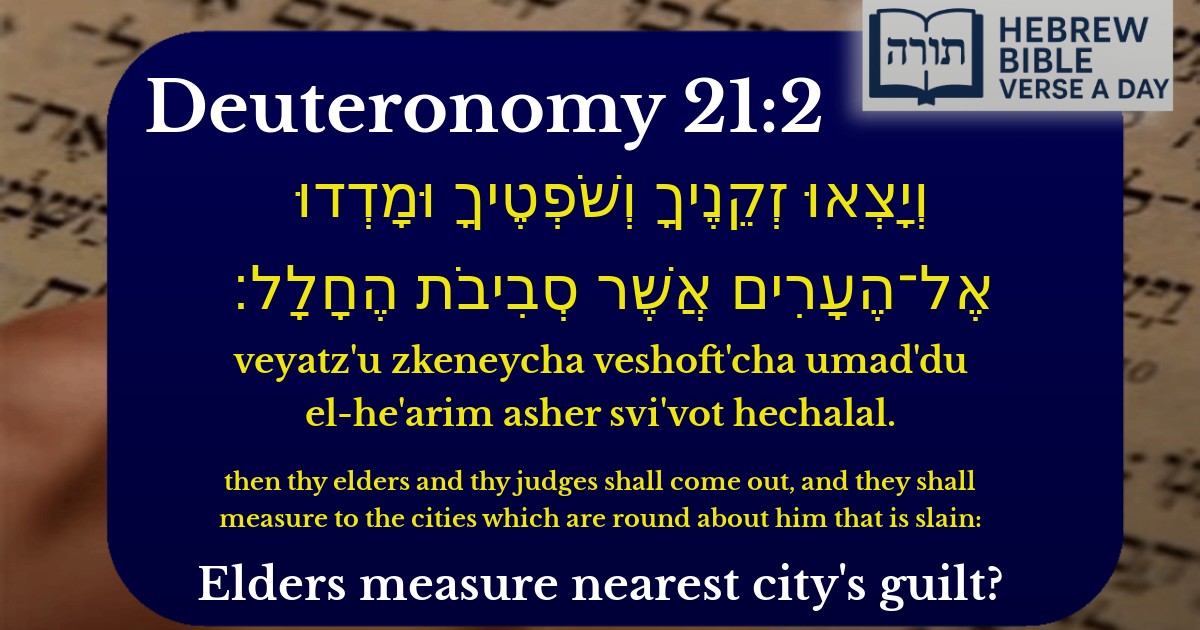Join Our Newsletter To Be Informed When New Videos Are Posted
Join the thousands of fellow Studends who rely on our videos to learn how to read the bible in Hebrew for free!
Hebrew Text
וְיָצְאוּ זְקֵנֶיךָ וְשֹׁפְטֶיךָ וּמָדְדוּ אֶל־הֶעָרִים אֲשֶׁר סְבִיבֹת הֶחָלָל׃
English Translation
then thy elders and thy judges shall come out, and they shall measure to the cities which are round about him that is slain:
Transliteration
Veyatz'u zkeneycha veshoft'cha umad'du el-he'arim asher svi'vot hechalal.
Hebrew Leining Text
וְיָצְא֥וּ זְקֵנֶ֖יךָ וְשֹׁפְטֶ֑יךָ וּמָדְדוּ֙ אֶל־הֶ֣עָרִ֔ים אֲשֶׁ֖ר סְבִיבֹ֥ת הֶחָלָֽל׃
Parasha Commentary
📚 Talmud Citations
This verse is quoted in the Talmud.
📖 Sotah 45b
The verse is discussed in the context of the ritual of the eglah arufah (the broken-necked heifer), where the elders of the city measure the distance to the nearest city from the place where a slain body was found.


Context of the Verse
This verse (Devarim 21:2) is part of the Torah's discussion of the eglah arufah (עגלה ערופה), the ritual performed when a slain body is found between cities, and the murderer is unknown. The elders and judges are commanded to measure the distance from the corpse to the nearest cities to determine responsibility.
Role of the Elders and Judges
Rashi explains that the "elders" (zekenim) mentioned here refer to the Sanhedrin or the local court of sages, while the "judges" (shoftim) are the Torah scholars who apply halachic rulings. The involvement of both emphasizes the gravity of the situation—a human life has been lost, and the community must take responsibility.
The Act of Measuring
The Talmud (Sotah 45b) discusses why measuring is necessary. Rambam (Hilchos Rotzeach 9:3) explains that this procedure serves as a public declaration that the city nearest to the crime did not neglect its duty to provide safe roads. The measurement is not merely technical but a symbolic act of communal accountability.
Spiritual Significance
Halachic Implications
The Mishnah (Sotah 9:1) states that if the measurement shows the corpse is equidistant between two cities, both must bring an eglah arufah. This underscores the principle that unresolved bloodshed defiles the land (Bamidbar 35:33), and all nearby communities must participate in the atonement process.